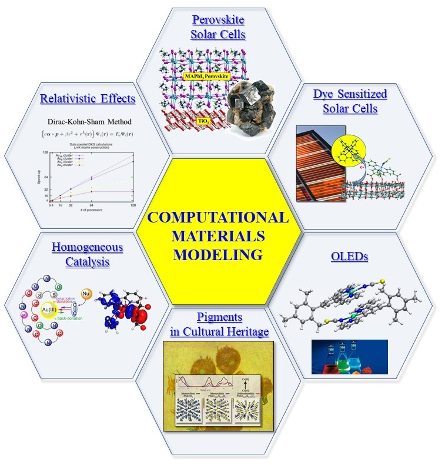
- This event has passed.
Colloquium Series: Filippo de Angelis, University of Perugia and CNR-SCITEC, Italy
Friday, March 5, 2021 @ 12:00 pm - 1:00 pm
We are excited to host Filippo de Angelis, from the University of Perugia and CNR-SCITEC, Italy for our Colloquium Series. Please note that our 2020-21 Colloquium Series will take place on Zoom.
Modeling the defect chemistry of metal halide perovskites: Towards stable and efficient materials
 Metal-halide perovskites are dominating the landscape of emerging photovoltaics, with efficiency approaching that of conventional high purity semiconductors. Despite the huge success, significant weaknesses still have to be overcome, including light and thermal-induced instabilities, which in turn are likely originated by the peculiar defect chemistry of this materials class. Mastering the photochemistry of defects and impurities is thus of paramount importance to obtain stable materials and consequently devices. Significant efforts have been devoted to the understanding of defect properties of high efficiency Pb-based materials, with general consensus on iodine-related defects (vacancies and interstitials) being related to both charge trapping and ion migration. This latter aspect is strongly associated to perovskite degradation and is thought to mainly occur at the surface or grain boundaries of polycrystalline thin films, where most of the defects are located. Tin-halide perovskites are the only Pb-free material class endowed with comparable optoelectronic properties to lead-iodide perovskites. Despite significant progress, the device efficiency and stability of tin-halide perovskites is still limited by two potentially related phenomena, i.e. self p-doping and tin oxidation. Both processes are likely related to defects, thus understanding tin-halide defect chemistry is a key step towards exploitation of this materials class.
Metal-halide perovskites are dominating the landscape of emerging photovoltaics, with efficiency approaching that of conventional high purity semiconductors. Despite the huge success, significant weaknesses still have to be overcome, including light and thermal-induced instabilities, which in turn are likely originated by the peculiar defect chemistry of this materials class. Mastering the photochemistry of defects and impurities is thus of paramount importance to obtain stable materials and consequently devices. Significant efforts have been devoted to the understanding of defect properties of high efficiency Pb-based materials, with general consensus on iodine-related defects (vacancies and interstitials) being related to both charge trapping and ion migration. This latter aspect is strongly associated to perovskite degradation and is thought to mainly occur at the surface or grain boundaries of polycrystalline thin films, where most of the defects are located. Tin-halide perovskites are the only Pb-free material class endowed with comparable optoelectronic properties to lead-iodide perovskites. Despite significant progress, the device efficiency and stability of tin-halide perovskites is still limited by two potentially related phenomena, i.e. self p-doping and tin oxidation. Both processes are likely related to defects, thus understanding tin-halide defect chemistry is a key step towards exploitation of this materials class.
In this talk I shall give an overview of what we know on metal-halide perovskite defect chemistry in relation to improving their long term stability and optoelectronic quality. Our investigations are based on state of the art density functional theory simulations carried out on prototypical Pb- and Sn-based perovskites, which unveil the mechanistic features and energetics associated to most abundant and potentially harmful defects in both material classes. Possible solutions to defect induced instabilities are discussed in terms of compositional alloying with different metals and surface passivation as the main strategy to obtain efficient and stable metal-halide solar cells.



